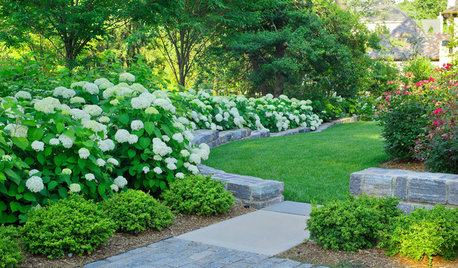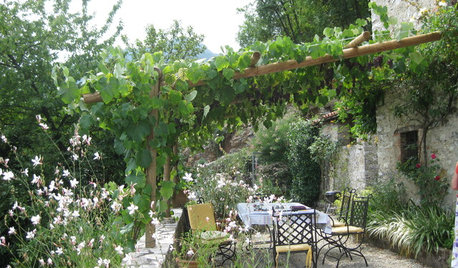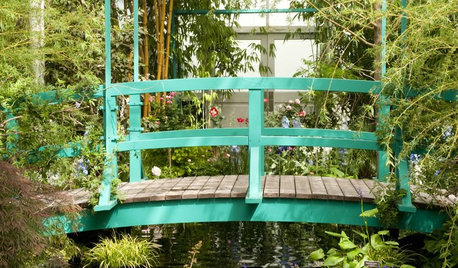New Thread: Wild Wildflowers II
Pallida
12 years ago
Related Stories

COLORWhat Goes With Purple Walls?
Make a plum wall come alive with art, warm metals, ivory, chartreuse, natural wood — and at least one wild card
Full Story
FLOWERS AND PLANTSHydrangea Arborescens Illuminates Garden Borders and Paths
This long-blooming eastern North American native shrub finds a home in landscapes around the world
Full Story
LANDSCAPE DESIGNRecipe for Mediterranean Edible Garden Style
The only thing better than a delicious meal outdoors is the satisfaction of growing some of the key ingredients yourself
Full Story
FLOWERSLessons from Monet's Garden
See how to bring the impressionist painter's vision to life in your own landscape with these flower choices and garden design ideas
Full Story
GARDENING GUIDES6 Plants That Beat Butterfly Bush for the Wildlife Draw
It's invasive, a nonnative and a poor insect magnet. Check out these better alternatives to butterfly bush in the garden
Full Story
GARDENING GUIDESHow to Find the Right Native Plants for Your Yard
Find plant maps, sale sites and guides that make going native in the garden easier than ever
Full Story
GARDENING FOR BUTTERFLIESBe a Butterfly Savior — Garden for the Monarchs
Keep hope, beauty and kindness alive in the landscape by providing a refuge for these threatened enchanters
Full Story
FRONT YARD IDEASBefore and After: Front Lawn to Prairie Garden
How they did it: Homeowners create a plan, stick to it and keep the neighbors (and wildlife) in mind
Full Story
SAVING WATERHouzz Call: Are You Letting Go of Your Lawn?
Many facing a drought are swapping turf for less thirsty plantings. If you’re one of them, we’d like to hear about it
Full Story
BEFORE AND AFTERSSee 6 Yards Transformed by Losing Their Lawns
Wondering whether a turf lawn is the best use of your outdoor space? These homeowners did, and they found creative alternatives
Full StorySponsored



redding
redding
Related Discussions
Wildflower Reference?
Q
Bloom Times for CA Wildflowers
Q
what is blooming in your garden - photos - part ii july 2012
Q
Show Us Your Gardens - A photo Thread - August 2014 Part I
Q
PallidaOriginal Author
cactusgarden
PallidaOriginal Author
cactusgarden
susanlynne48
PallidaOriginal Author
PallidaOriginal Author
redding
PallidaOriginal Author
redding
cactusgarden
redding
cactusgarden
cactusgarden
redding
PallidaOriginal Author
cactusgarden
redding
PallidaOriginal Author
redding
PallidaOriginal Author
redding
PallidaOriginal Author
redding
susanlynne48
PallidaOriginal Author
redding
Okiedawn OK Zone 7
redding
Okiedawn OK Zone 7
redding
Okiedawn OK Zone 7
tracydr
redding
cactusgarden
redding
cactusgarden
cactusgarden
PallidaOriginal Author
redding
redding
PallidaOriginal Author
tigerdawn
redding
tigerdawn
redding
susanlynne48
tigerdawn